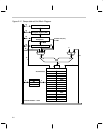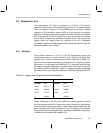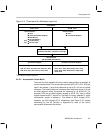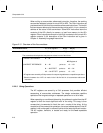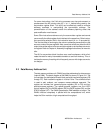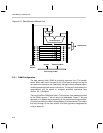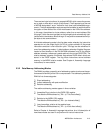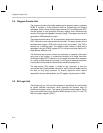
Computation Unit
2-8
The all-zero values are necessary for data transfers and unitary operations.
All-zeros also serve as default values for the registers, which helps to minimize
residual power consumption. The databus path through ALU-A is used to input
memory values (RAM) and constant values (program memory) to the ALU.
The PH and PL inputs are useful for supporting multiply-accumulate
operations (refer to Section 2.2.1, Multiplier).
The operations supported by the ALU include arithmetic, logic, and
comparison. The arithmetic operations are addition, subtraction, and load
(add to zero). The logical operations are AND, OR, XOR, and NOT.
Comparison includes equal-to and not-equal-to. The compare operations may
be used with constant, memory, or string values without destroying any
accumulator values.
2.2.2.1 Accumulator Block
The output of the ALU is the accumulator block. The accumulator block is com-
posed of thirty-two, 16-bit registers. These registers are organized into two ter-
minals, denoted accumulator and OFFSET accumulator. The terminals pro-
vide references for all of the data which is to be held in the accumulator block.
The accumulator incorporates one-half of the 32 accumulator registers:
AC0..AC15. The OFFSET accumulator incorporates the other half:
AC16..AC31.







